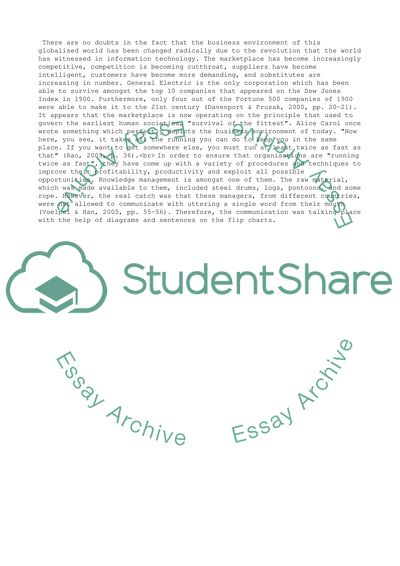Cite this document
(“Knowledge Management Essay Example | Topics and Well Written Essays - 1750 words”, n.d.)
Knowledge Management Essay Example | Topics and Well Written Essays - 1750 words. Retrieved from https://studentshare.org/management/1448237-knowledge-management
Knowledge Management Essay Example | Topics and Well Written Essays - 1750 words. Retrieved from https://studentshare.org/management/1448237-knowledge-management
(Knowledge Management Essay Example | Topics and Well Written Essays - 1750 Words)
Knowledge Management Essay Example | Topics and Well Written Essays - 1750 Words. https://studentshare.org/management/1448237-knowledge-management.
Knowledge Management Essay Example | Topics and Well Written Essays - 1750 Words. https://studentshare.org/management/1448237-knowledge-management.
“Knowledge Management Essay Example | Topics and Well Written Essays - 1750 Words”, n.d. https://studentshare.org/management/1448237-knowledge-management.


